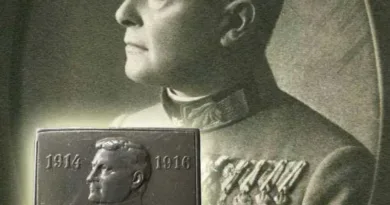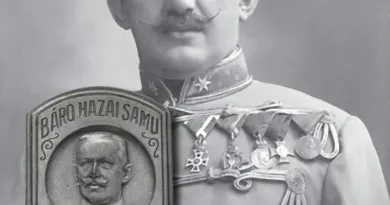General Árpád Tamásy
He was born in 1861 in Kőhalom, near Brassó. After graduating from the Vienna Military Academy of Staff, he worked primarily in military administration, and from 1902 he was the commander of the 18th Honvéd Infantry Regiment. Prior to the Great War, he worked in the Hungarian Royal Ministry of Defense, and from 1914 he was a group leader in the KuK Ministry of War. In September 1914, he was appointed commander of the 23rd Infantry Division as a lieutenant general.
This division was the moving body of the Przemysl Fortress. Prior to the siege of the fort, the division took part in the battles around Lemberg. The commander of the division, Tamásy, was the deputy of the fortress commander, Kusmanek infantry general. The fortress was guarded and protected primarily by the 97th Insurgent Infantry Brigade. My great-grandfather served in the 11th Regiment of this brigade. The technical equipment and artillery were, of course, handled by trained technical and artillery units. The main task of the 23rd Division during the siege was to disturb the besiegers. Later, the task was to break the siege, to establish contact with the parts of the 3rd Army trapped in the Carpathians. This failed even after three major outbreak attempts, so the defenders of Przemysl were forced to surrender on March 22, 1915. By this time, the fort had run out of food. Nearly 150,000 Austro-Hungarian soldiers were taken prisoners of war here, including the commanders of the fortress.

Tamásy was promoted to artillery general during his captivity. He returned from captivity in early 1918. After that, he commanded first the 20th army division, then from April to July the XXII. corps. From July 1918 until the end of the war, the he was appointed commander of the IV. corps. This corps was stationed on the Italian front and became part of the Isonzo army. At that time, the forces of the Monarchy were no longer able to initiate more serious actions and showed signs of disintegration. Thus, as a corps commander, Tamásy could no longer carry out a major military operation.
After the war, Árpád Tamásy was one of the first to be admitted to the Order of Knights founded by Governor Horthy. He lived in Budapest and died in 1939.

In his absence, the badge makers who made the general portraits did not form a cap badge about Tamásy. Upon his return, using the motif of an earlier badge, his corps received a badge. It is also an Arkanzas product, one of the badges made in 1917 for the 12th Honvéd Infantry Regiment was used as a master copy. It is not entirely clear if the XXII. or IV. corps got the badge? Since the XXII. corps consisted mostly of Austrian Landwehr regiments, while from the summer of 1918 onwards, the IV. exclusively from honvéd divisions, so I consider the latter more probable.




